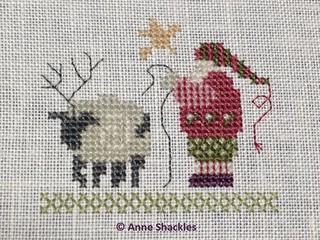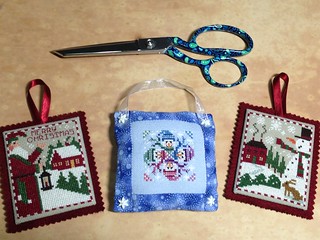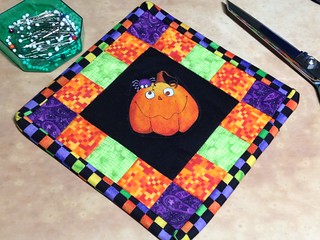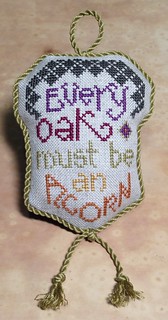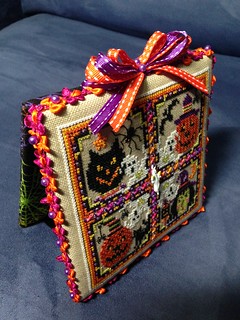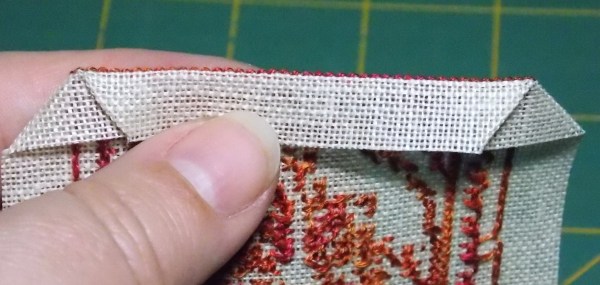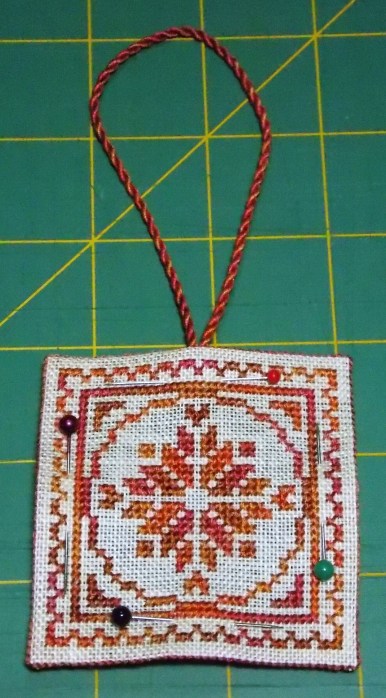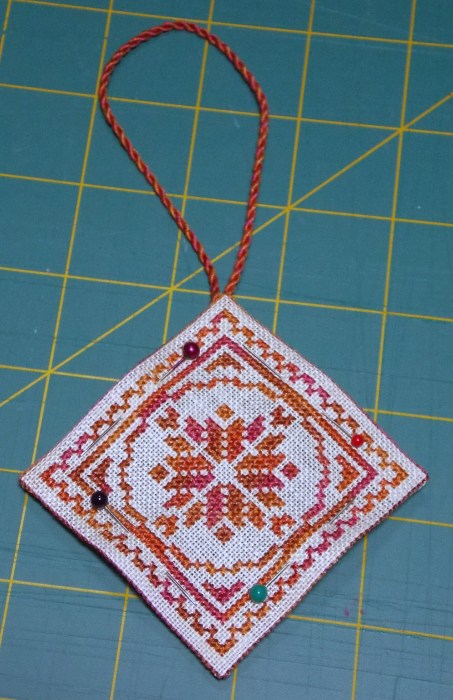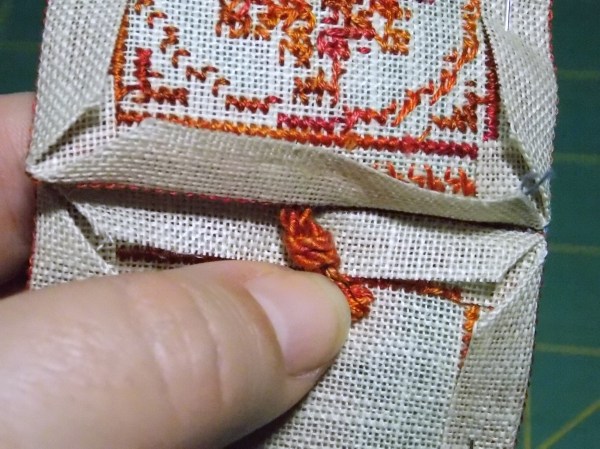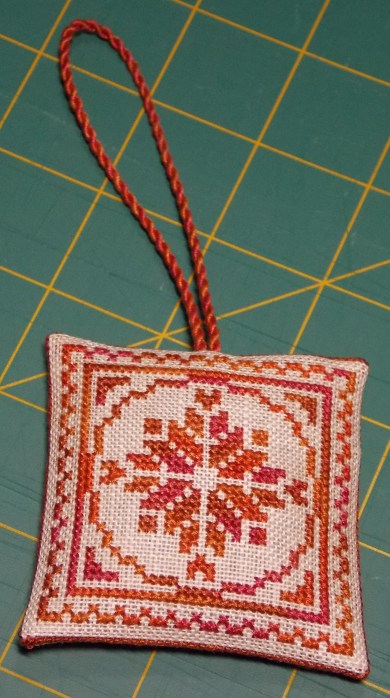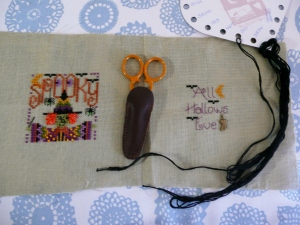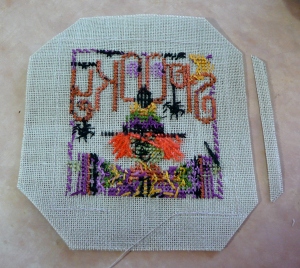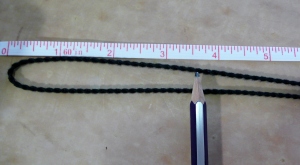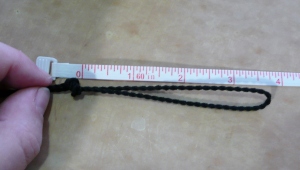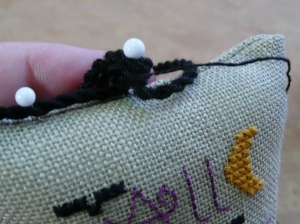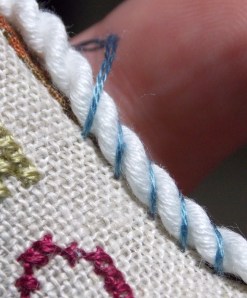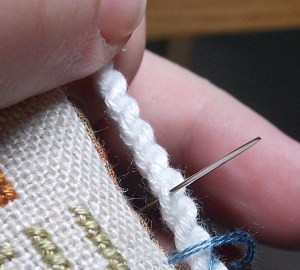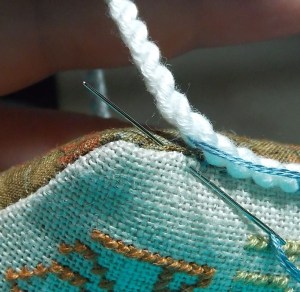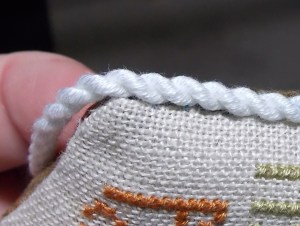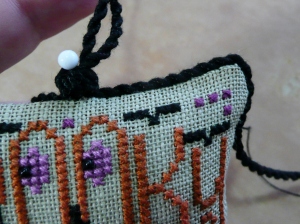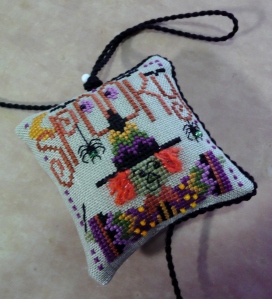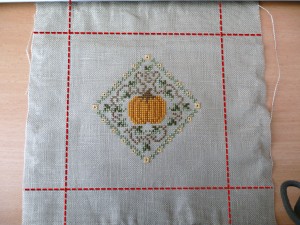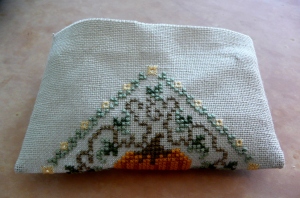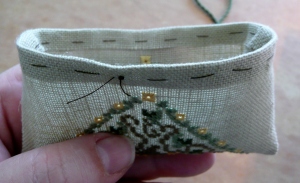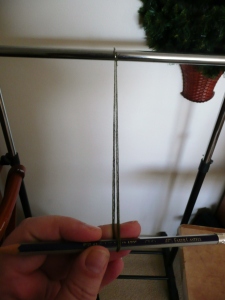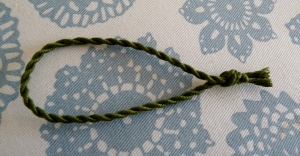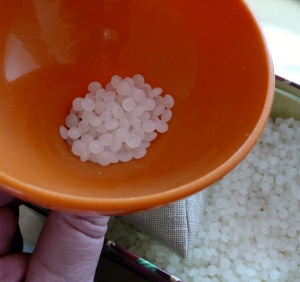
Hmmm, it seems I’m more than a ‘bit’ forgetful these days … it seems even though I was posting to my blog during April I totally forgot all about the official WIPocalypse update post … doh!! April saw a wee bit of stitching, including the completion of Nora Corbett’s Miss Valentine fairy and Blue Bayou by Northern Pine Designs … it also saw a couple of small ornie finishes … so all-in-all probably a reasonable month of stitching. The ill-fated Flossy has found a happy home with my Mum (the Dragon) … we were going to offer it to a very close family friend, but Mum made me laugh when she said she has it propped up on her computer chair in her bedroom so she can see her all the time and she says goodnight to her every night as she goes to sleep … bless her. When I mentioned giving it to our dear friend, her response was “she can have it when I’m gone”! She’s even got plans for how to get her framed, so I’m pleased she loves her so much that at least she will be treasured. I do have to admit she does look very pretty, even though she is dressed head to toe in candyfloss pink! 😀
When it came to the end of April and then into May, my mojo kind of disappeared a wee bit when I came to the end of my canvaswork rotation and started my “finishing” rotation … for some reason I have to really be in the mood to sit down and do finishing work. I think part of the problem these days is that I don’t have a dedicated area that I can start items and then leave them to pick up and finish later … with my current flatmate I don’t feel comfortable doing my needlework or finishing in front of him (aside from the fact he comes and puts the TV on as soon as he walks in the room, irrespective of whether I was enjoying the peace and quiet or not in there myself), and I just don’t have the space in my bedroom with all the other junk that is piled up in there …
Last weekend, though, I decided “bugger the flatmate” and pulled a small fold-up table into the lounge, did a bit of finishing, then pulled the little table out of the way at the end of the weekend – it was also still there for this last weekend when I did a wee bit more finishing yesterday while he was out (mind you I only did that because I’d figured out he was going to be away for the rest of the weekend and out of my hair!!). So perhaps I have found a solution for when I come to my finishing rotation again – and in fact I could possibly pull it into my bedroom too on a temporary basis as long as I pull it back out again before sleeping … hmmmm, I like that plan! So, what did I manage to do with my finishing rotation over the last few weeks? I managed to finish off the following – which really didn’t need that much done to them for them to be 100% finished … First up 3 ornies – these just needed the felt backings and hangers for the Prairie Schooler ones, and the hanger and little snowflake buttons for the Just Nan one
Next up I stitched down the binding on my teeny Halloween quilt … I did a bit of a hash job on the corners, but it’ll have to do …
And then my final piece for that particular finishing session was to stitch the cord around the edge of this wee freebie:
This last weekend just gone I managed to finish off one of my favourite Halloween pieces into a flat-fold … I found a bright trim in my stash along with some bright ribbons, and pretty happy with the way it turned out 🙂
Then I finished off yesterday by trying to finish my Bunnies in the Garden needlework set that I stitched a few years ago … sadly it seems I don’t have the ribbon needed to completely finish it, so I’ve got as far as I can go without it … hopefully I’ll get chance next week to pop into Spotlight and find a silk ribbon that will work (assuming Spotlight still SELL silk ribbon, that is!). Here is how it stands so far:

The only stitching I’ve done since the last stitching update is to start a charity quilt block with the theme of butterflies. I bought about a metre of 14-ct white Aida a few years ago in readiness to do some charity stitching, but with my city commute I just never had the mental or physical energy to do it … now I’m working closer to home I figure it’s time I pull my finger out and get some finished. What also gave me the final kick in the pants was searching for an old XS kit in my wardrobe and finding a bunch that I’d bought especially to use for charity blocks … so out they came ready to start stitching! Here are the kits I have in the charity block armoury to work my way through:


And here is where I’m at currently for my first butterflies block … once I’ve finished this block it’s time to get back into my formal rotation once again.

I still have a couple of gifts to complete, but I work better when I’m sticking to my rotation properly so they will just have to find a rotation slot to drop into and work together with my other pieces 🙂 I’ve probably dribbled on enough for now, but before I hit “publish” I’ll finish off with the two WIPocalypse questions for April and May:
April: How do you keep your stash organised?
Oh my goodness, I don’t know if I could truly say my stash is “organised” per se … although I guess to a certain extent it could be a lot worse! My problem is that it is scattered all over the place and not all together. I’m also a lazy git at heart, so often I can’t be bothered putting something away after stitching it (eg threads etc) and I end up with a dumping corner with threads and charts not put away … it’s no wonder I can often not find what I’m looking for when I just “know” I’ve got it “somewhere”!! On the whole, though, it is kinda organised in a disorganised way …
- Threads: On the whole these are all stored in Flossaway baggies in numerical or alphanumeric order and on individual rings according to their brand. DMC floss is all stored in numerical order in two plastic tubs so they’re easily accessible as I generally use those the most. Overdyed threads etc are mostly stored alphanumerically by the colour name, but with the thread brands separated on different rings. For example, I have separate rings for WDW, GAST, Crescent Colours, Needle Necessities/Threadworx etc. All these threads are housed in a cardboard storage tub that sits in my Ikea ‘bookcase’. Silks are stored the same way, and pearl cottons and other specialty threads (pearl cottons etc) are stored in another plastic tub.
- Fabrics: These are stored by thread count in two Ikea storage drawers – they used to be sorted in colour groups but I quickly gave up on that idea after I’d rummaged around a few times and disrupted it all! I also have a ‘tub’ of fabrics sitting on top of my DMC that I’ve obviously pulled out at some stage for a project and never been put back …
- Charts: Generally these are stored by theme in ringbinders on bookshelves. Most of these are housed in the kitchenette on my main bookshelves, but most of my favourite designs/smalls charts are in my bedroom on a narrow bookcase. I have a couple of folders of “to be stitched ASAP”, but I’m trying to focus on those already partially kitted up first (see below).
- Finishing fabrics/trims: Truthfully these are all over the place! Most of my quilting fabrics are in Ikea storage drawers in my wardrobe, with finishing trims etc in a little plastic storage system that has a few pullout drawers. Not ideal, but seems to work OK for now.
My projects themselves are in a whole world of their own where organisation is concerned! I’ll try to differentiate the different types:
- WIPs: My current rotation projects are sitting in their own storage tub with the project on scrollbars/Qsnaps and sitting with their threads/charts etc in a plastic envelope. That way each project is ready to go immediately when I want to drag it out of the tub.
- UFOs: Older WIPs that I haven’t touched for years are sitting in a cardboard storage tub in my Ikea bookcase in my bedroom – these are not stored on scrollbars etc and may/may not have threads with them … they just sit there forlornly at the very bottom of the bookcase feeling unloved …
- Partial & full kits: When I was housesitting in Melbourne I went a bit crazy and cut up fabrics for a few tubs worth of projects and put the fabric with the chart … these are now housed in two separate areas – some of these are sitting along with other full kits in two storage drawers in my wardrobe, and the others have all been split into cardboard storage boxes according to their size that will fit with my rotation. I basically have one box each for “Large/BAPs”, “Medium” and “Small” projects. I’m trying to work through those items first before kitting up new designs, seeing as the fabric is already committed and cut up ready for stitching! That seems to work about 95% of the time, but ever now and then a new project seems to leap out of the chart pile demanding to be stitched first!! 😛
- Canvaswork: My canvaswork projects are sitting to the left of my Ikea storage bookcase in a shopping bag – these are kitted (or semi-kitted as far as I can for now) with their canvas and threads/charts all ready for when my canvaswork rotation rolls around. This bag probably makes me drool more than the rest of my storage boxes, if the truth be known!
May: What designs or themes do you really wish you could find? What do you think is missing among stitching designs?
Truthfully I can’t say I really have had problems finding a specific type of design … I have, however, had problems finding a specific design that has since gone OOP and hard to locate unless you spend a fortune. Those are the designs I wish would be more readily available, especially now that PDF downloads are widely available and don’t require a full print-run by a designer. The other thing I find frustrating is the number of designs only available as kits and not charts, and how many are only available with Aida cloth as the fabric – the fact that I inevitably substitute the fabric in all my kits is not a cost-effective way for me to stitch a design … I really wish that all designs had the option of either having linen in the kit or to just have the chart made available (although I know this would diminish some of the designer’s/distributors’ profits to a certain degree).
The only other thing that has been happening over the last few weeks is something that I can’t talk about yet on my blog, but it threw me for a loop temporarily and my mind has been very very distracted over recent weeks, and I’ve been even more forgetful than ever, if that was even possible! Hopefully there will be further news sooner rather than later and I can talk about it openly … for now it’s just a case of “wait and see” 🙂



